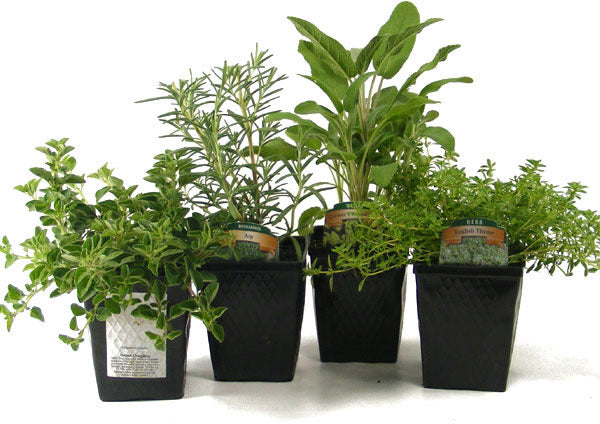5 Easy Steps To Growing Herbs

Nothing really compares to the wonderful aroma and fresh taste of herbs just cut from the garden. Fortunately herbs are quite easy to grow and thrive when they are trimmed on a regular basis. New to growing herbs, no problem! I'll share my top 5 bullet-proof tips to grow beautiful, healthy herbs in your garden or in a container.
Herbs are a plant, either perennial or annual, whose fresh or dried parts are used to season foods, provide fragrances, supply natural dyes or make industrial and pharmaceutical products. Culinary herb plants are those whose fresh or dried leaves are used in cooking. Some common culinary herbs are sage, oregano, tarragon, rosemary, lavender and thyme.
How and Where to Grow Herb Plants..
Herb plants can be grown in small pots or containers as patio plants. You can grow herbs in perennial beds and borders, or you can establish a “herb garden” in an area adjacent to your vegetable garden. How large of an area you dedicate to herbs depends on your own personal preference and on the amount of space that you have available.
Tips to Successfully Grow Herbs:
1. Exposure and location - Most herbs will grow well with the same sunlight (6-8 hours minimum), fertility, soil, growing conditions, and cultural techniques required by vegetables grown in hardy gardens.

2. Use the right soil for great results - The soil should not be extremely acidic or alkaline; a soil nearly neutral is best for most herbs. A pH reading between 6.5 and 7.0 produces the best herbs. Most herbs do not need a highly fertile soil. Highly fertile soils tend to produce excessive foliage that is poor in flavor.
The container is just as important as the soil for successful growth. Herbs like to be grown on the dry side, therefore good drainage is essential. If you are using metal buckets as shown in the picture you will need to drill several drainage holes before planting.
3. Water with restraint - Pay special attention to drainage and moisture requirements of certain herbs since many are very sensitive to soil moisture conditions. Sage, rosemary and thyme require a well-drained, slightly moist soil, whereas parsley, chervil and mint grow best on soils that retain moisture. Growing herbs in raised beds is an easy way to correct soil and drainage issues.
4. Pick a convenient location - Grow herbs in a location that is convenient to harvest the herbs on a regular basis. Herbs make great container plants and can be added into container plantings with annuals such as violas and verbena for added splashes of color. Mints can be invasive so it is best to grow mints either in pots or segregated areas of the garden.
5. Start with healthy plants - Herbs can be grown from seeds or planted as potted plants. Slow growing herbs such as lavender, rosemary, sage and oregano will produce the first season if planted from potted plants rather than grown from seed.
And most of all remember, herbs like to be harvested, herbs are there to be enjoyed! Your herbs will reward you with repeat growth if you use them on a regular basis.


